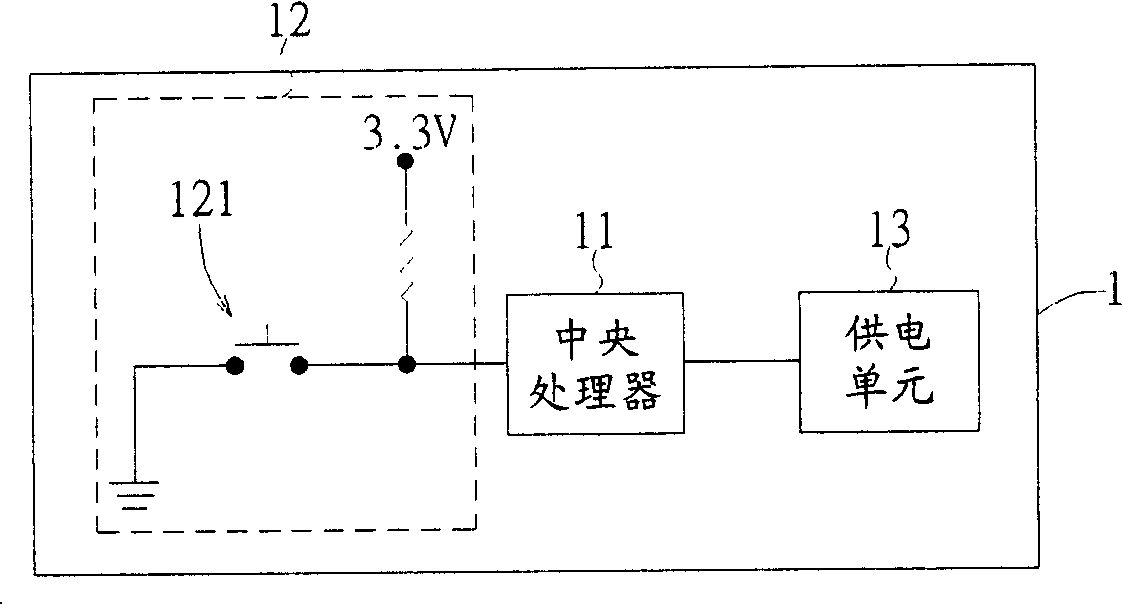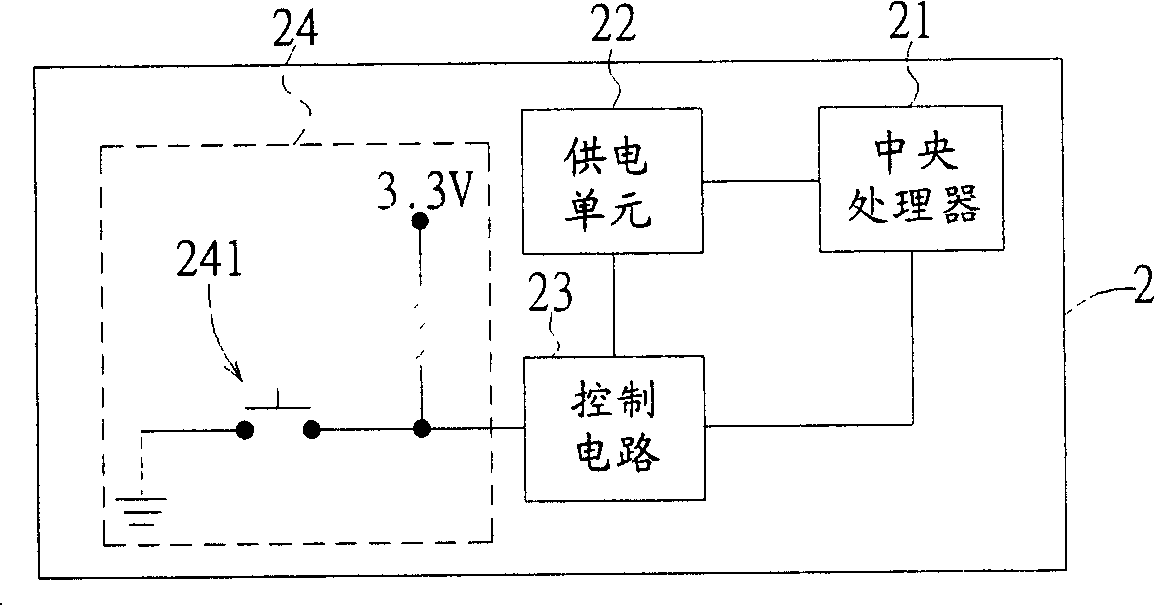Electronic device energy supply control module and energy supply control method
An electronic device and power control technology, applied in the direction of measurement device, data processing power supply, measurement flow/mass flow, etc., can solve problems such as crash and unstable system power supply.
- Summary
- Abstract
- Description
- Claims
- Application Information
AI Technical Summary
Problems solved by technology
Method used
Image
Examples
Embodiment Construction
[0046] The aforementioned and other technical content, features and effects of the present invention will be clearly presented in the following detailed description of a preferred embodiment in conjunction with the accompanying drawings.
[0047] refer to Figure 4 , Figure 4 It is a preferred embodiment of the power control module 41 of the electronic device 4 of the present invention, which is used to realize the power control method of the electronic device of the present invention. The electronic device 4 of this embodiment has a plurality of hardware units 42, and an electrical connection The power supply unit 43 of the hardware unit 42 described above.
[0048] The power control module 41 includes a switch unit 411 , a logic unit 412 , and a CPU 413 electrically connected to the power supply unit 43 . The logic unit 412 is an "OR" logic gate (OR Gate) with two input terminals 414, 415 and an output terminal 416, and its input terminals 414, 415 are electrically connec...
PUM
 Login to View More
Login to View More Abstract
Description
Claims
Application Information
 Login to View More
Login to View More - R&D
- Intellectual Property
- Life Sciences
- Materials
- Tech Scout
- Unparalleled Data Quality
- Higher Quality Content
- 60% Fewer Hallucinations
Browse by: Latest US Patents, China's latest patents, Technical Efficacy Thesaurus, Application Domain, Technology Topic, Popular Technical Reports.
© 2025 PatSnap. All rights reserved.Legal|Privacy policy|Modern Slavery Act Transparency Statement|Sitemap|About US| Contact US: help@patsnap.com



